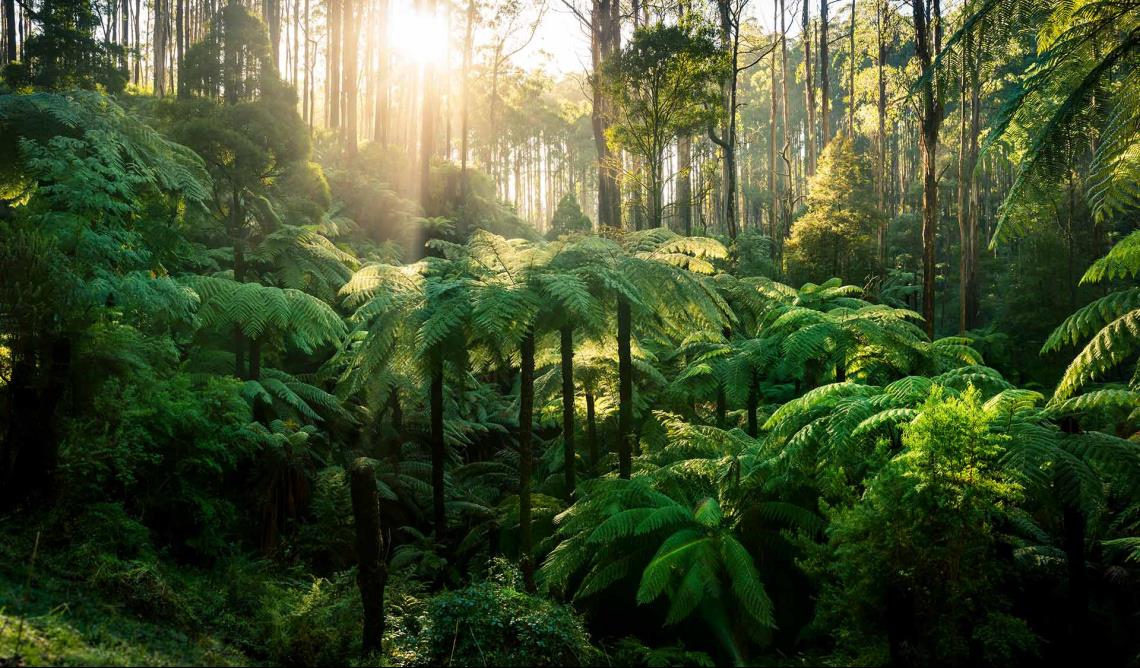The Forest Giant: Mountain Ash
Monday 1 August, 2022
Standing in the heart of a tall forest, it’s hard not to feel small. Feel the wonder as you look up at the forest giants – towering trees that stretch into the sunlight. With some of these giants more than 300 years old, they remind us of our place in the world.
Ranger Tony agrees: “I’ve been monitoring Mountain Ash for over 20 years. Even now, I can’t help but walk past one in the forest and feel wonder. The more I learn about them, the more I am amazed. I often think to myself, ‘how does nature work this out?’”
You’ve probably stood amongst these towering trees before, but do you know their story? The mighty Mountain Ash tree is the tallest flower in the world.
Native to Tasmania and Victoria and soaring to heights of over 100 metres, they are the second tallest tree species in the world. Not only do they beckon above you with their towering branches, but they play an important part in our tall forests – protecting and nurturing nature both in the air and on land.
Growing from seeds which are released following fire, Mountain Ash thrive on sunlight – causing them to shoot towards the sky from a wide trunk which burrows into the wet forest.

“One of the things that amazes me is how they can regenerate in the right environment” explains Kinglake National Park ranger Tony. “If you look at their seeds under a microscope or hand lens – you can see they have specific angles on them. They are literally the size of a pinhead but are somehow perfectly adapted to cut through ash following a fire. They will penetrate this layer of fluffy ash and once it rains – the race to grow begins.”
Mountain Ash seedlings grow amazingly fast, seizing their space among the dense forest ecosystem. Only the tallest and strongest will survive the quick race to the top, shooting above the forest canopy and marking their place as the new giant of the landscape.
Proudly standing straight and tall, these mammoth trees shade the rest of our mystical wet forests, providing vital habitat for some of Victoria’s most precious and biodiverse creatures.
Old growth trees are the important shelter for Victoria’s faunal emblem, the endangered Leadbeater’s Possum. Thanks to the tree’s hollows, the beloved marsupial can sleep, forage, and breed while staying safe from prey.

Look up in a tall forest and you may catch a glimpse of movement along the Mountain Ash’s branches and hollows. Watch closely and try to spot a cavity-nesting bird such as the stunning, spotted sooty owl perched on a tree. You might even be lucky enough to see a Greater Glider – the world’s largest gliding marsupial – soaring through the air.
For such a giant, you may be surprised that beneath the soil, it has a small and tightly packed root system. Storing enough water to support their marvellous height, their roots help support the flourishing flora and fungi bursting with colour on the forest floor.
Although they are well known as the mighty protectors of some of our most vulnerable wildlife, we can also thank this tree for our access to quality, clean water. Early settlers in the 1860s quickly recognised Mountain Ash thrived in wet environments, marking an important location for Victoria’s reservoirs.
A true protector, caregiver, and supplier – a visit to Mountain Ash will leave you wonderstruck.
“They are these spellbinding trees that have an ability to fill you with admiration” explains ranger Tony. “I feel incredibly lucky to help care for them day to day. Whenever you enter the wet forests of Victoria, you can feel their towering and humbling presence – even as everything else is perfectly still.”

Experience the almost mythical wonders of a Mountain Ash Forest by walking through Jehosaphat Gully at Kinglake National Park or Badger Weir in Yarra Ranges National Park.
In the west, immerse yourself in a tall forest and mountain bike through the Forrest section of Great Otway National Park. For a visit in Gippsland, the forest giants Tarra-Bulga National Park on Brataualung Country will leave you wanting to learn more.

